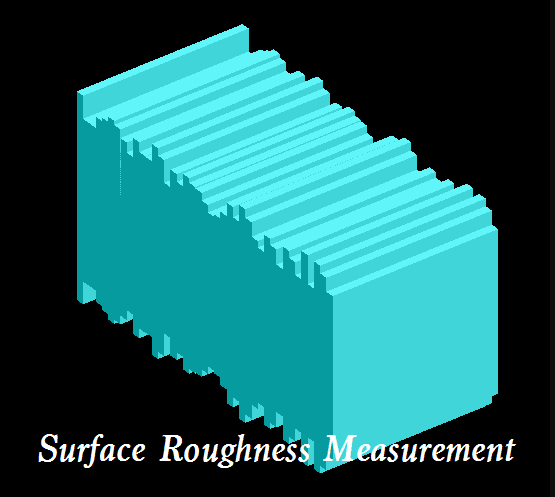In industrial production, due to the vibration of machine tools and cutting tools, as well as some other factors, the surface of parts can’t be completely smooth. Surface roughness measurement is a technical standard to evaluate the surface quality of parts.

What is Surface Roughness
Surface roughness refers to the micro geometric form error composed of small spacing and small peaks and valleys on the machined surface. The smaller the micro geometric error of the machined surface is, the higher the surface accuracy is.
The surface of a part formed by cutting or other methods always has geometric shape errors due to plastic deformation of materials, mechanical vibration, friction and other reasons. Due to different processing methods and workpiece materials, the depth, density, shape and texture of the traces left on the machined surface are different.
Surface Roughness Inspection & Measurement Instrument
According to the different methods of surface roughness measurement, the inspection instruments can be divided into contact roughness measuring instruments and non-contact roughness measuring instruments. In contact measuring instruments, the main methods are the comparison method, impression method, stylus method, etc In the non-contact measuring instrument, the optical cutting method, real-time holography, speckle method, astigmatism method, optical heterodyne method, AFM, optical sensor method and other methods are commonly used.
What are the surface roughness testers? The surface roughness meter has different sizes, specifications of different materials, and can also measure different roughness of different workpieces. According to national standards and international standards, the stylus surface roughness measuring instrument is the most commonly used, convenient and reliable surface roughness measuring instrument. According to the different principles of the sensor, the stylus roughness meter can be divided into inductive, piezoelectric, photoelectric, laser and grating types, and can also be divided into the type with and without a guide.
Surface Roughness Measurement Method
1) Comparative method
It is commonly used for field measurement in workshops and measurement of a medium or rough surface. The method is to compare the measured surface with the roughness sample plate marked with a certain value to determine the roughness value of the measured surface. Methods for comparison: Ra>1.6 μm, visual inspection, Ra1.6~Ra0.4 μm, use Magnifier, Ra<0.4 μm, use a comparison microscope. During the comparison, the processing method, texture, direction, and material of the sample plate shall be the same as the surface of the part to be tested.
2) Stylus method
The diamond stylus with a tip curvature radius of about 2 microns is used to slide slowly along the measured surface. The up and down displacement of the diamond stylus is converted into an electrical signal by an electrical length sensor. After amplification, filtering and calculation, the surface roughness value is indicated by the display instrument, and the measured profile curve can also be recorded by a recorder. Generally, measuring tools that can only display surface roughness values are called surface roughness measuring instruments, and those that can record surface profile curves are called surface roughness profilers. These two measuring tools have electronic computing circuits or computers, which can automatically calculate the arithmetic mean deviation Ra of the profile, the ten point height Rz of the micro unevenness, the maximum height Ry of the profile and other various evaluation parameters. They have high measuring efficiency and are suitable for measuring the surface roughness with Ra of 0.025-6.3μm.
3) Light sectioning
Double tube microscope can be used to measure the surface roughness, which can be used for the evaluation of Ry and Rz parameters, and the measurement range is 0.5~50.
4) Interferometry
The shape error of the surface to be measured is displayed in the form of interference fringes using the principle of light wave interference, and the microscopic part of these interference fringes is magnified by a microscope with high magnification (up to 500 times) for measurement to obtain the roughness of the surface to be measured. The surface roughness measuring tool using this method is called an interference microscope. This method is suitable for measuring surface roughness with Rz and Ry of 0.025-0.8μm.